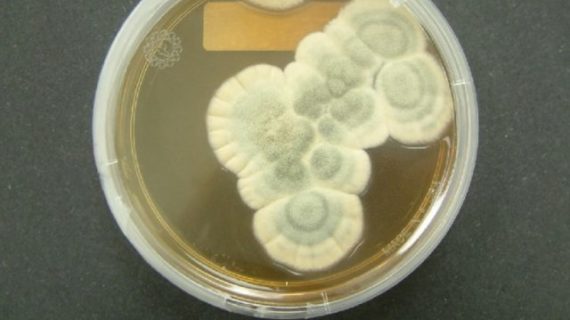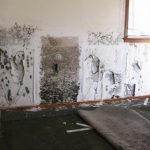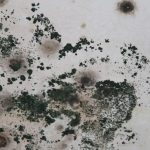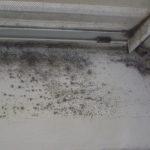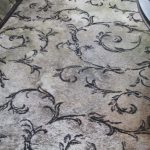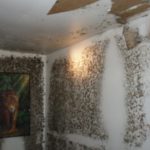Hearing the name “Penicillium” usually makes you imagine antibiotic or certain cheese types. However, penicillium mold is also a problem when it appears on indoor or outdoor structures in buildings.
When it grows uncontrollably, its presence can bring various problems, including health concerns.
Here is what you must know about Penicillium mold, including its effects and removal methods.
What is Penicillium Mold?
The name “Penicillium” actually encompasses 300 species of fungi. Some of them is for antibiotic, while others using it to make cheese like Camembert.
While some species are useful for humans, others can bring harm. Penicillium mold is like other types of mold, it can cause structural damage and health concerns if its rapidly growth.
Penicillium mold is very common, but a little different from other mold types. It can grow even in areas with relatively low humidity.
Therefore, you need to pay more attention toward the environment, to trace the possible growth of this mold. Penicillium mold has heavier musty smell compare to other molds, due to its microbial organic compounds that are constantly set free.
Where Does Penicillium Mold Grow?
Penicillium mold grows in diverse types of surface. Outside, it usually grows on a rotten pile of compost or leaves, soil, old wood, and rotten fruits.
Inside, it can grow on surfaces such as wooden beams and planks, wallpaper even glue. It is easy to accidentally transfer mold spores from outside to the inside, which causes an infestation in your house or building.
Penicillium mold also grows on (and inside) foods such as cheese, bread, and fruits. Farmers also pay attention to the risk of mold growth when they store seeds or grains.
Objects like old books, wet carpet, and old doormat can also be locations for Penicillium mold growth.
Penicillium Mold Health Effects
Many Penicillium mold species are actually benign, but the spores they release can still bring various risks for some people. People with asthma, allergy, or bad health condition are especially at risk.
Long exposure to the spores can cause symptoms such as coughing, sneezing, headache, runny nose, and wheezing breath. Babies and children are also vulnerable toward this exposure.
Some species of Penicillium mold release mycotoxin, a substance that makes many homeowners around the world worried. Examples include:
Penicillium citreonigrum is producing Citreoviridin is a mycotoxin , Penicillium toxicarium, and Penciillium charlesii. The mycotoxin is commonly found on a mold that grows on foods, such as grains, rice, and corn.
Lab tests results shows such effects as convulsions, vomiting, limb paralysis, and cardiovascular damage in animals such as mice, cats, and dogs.
-
Ochratoxin A
This mycotoxin is found in Penicillium verrucosum, a type of indoor mold often grows in granaries or seed storage. The substance is known for causing kidney problems in livestock, which often inhales the spores of the mold.
There is also suspicion about the carcinogenic quality in this mycotoxin.
Penitrem is produce by species such as Penicillium cyclopium and Penicillium commune.
These mold species usually grow on foods such as cheese and fruits, and the mycotoxin finds its way toward human’s digestive system through oral consumption. However, it can also affect humans through spore inhalation.
Patulin is produced by various types of Penicillium mold, and scientists are still trying to figure out its actual danger toward animals and humans. However, there are indications that patulin has carcinogenic quality.
-
Penicilic acid
Although not a mycotoxin, his substance commonly in various Penicillium mold species. Penicilic acid can cause acute allergic reactions and toxic symptoms in mammals.
If you are worried about the presence of certain mycotoxin, you need to request for professional testing service. However, no matter what type of mold you find in your home or property, the most important matter is getting rid of it.
Penicillium Mold Allergy
Even the most benign Penicillium mold species can still bring allergy concerns, due to their flying spores.
Constant exposure toward the spores can be dangerous for allergic people, who already have health condition such as asthma.
Hypersensitivity pneumonitis is one of the most common serious conditions caused by mold allergy. It is a condition where the lungs experience inflammation due to inhaling dust-like particles.
There are several names that refer to this condition, but the ones that are cause by Penicillium mold known as woodworker’s lungs or cheese washer’s lungs.
This condition can happen between 4 and 6 hours after exposure toward mold (acute), or years of exposure (chronic). Symptoms include fever, rash, chill, swelling, headache, cough, weight loss, fatigue, and a tight feeling in the chest.
Since they are indistinguishable from regular ailments, you may not realize the main problem until later. Visit a doctor as soon as possible if the symptoms do not stop even after taking medicines.
Penicillium Mold Removal Tips
Penicillium mold may grow on a lot of surfaces, from wood and bathroom tiles, to foods in your refrigerator. If the infestation is small, you can try removing it with homemade methods.
Do not forget to wear disposable gloves and goggles before doing any mold remediation steps.
For mold on wood, vinyl, or tiles, you can create cleaning mixture. Made with one part of vinegar, hydrogen peroxide, or mild detergent, and three parts of water (add bleach if necessary).
Spray this mixture on top of the moldy surface before scrubbing it. Let the surface dries naturally, and repeat the process until you no longer see the mold.
If any carpet or upholstery is attacked by mold, you better throw it out and buy the new one. The same thing applies for moldy food: you need to remove every moldy item and all the surrounding products as fast as possible.
Afterward, clean the fridge or food storage thoroughly to remove the rest of the mold particles or pores.
What if the infestation problem is huge? Call professional mold remediation service immediately. You cannot perform manual cleaning on large infestation, since the mold is likely to come back.
Professional service uses proper cleaning methods and products to get rid of your Penicillium mold problem.
